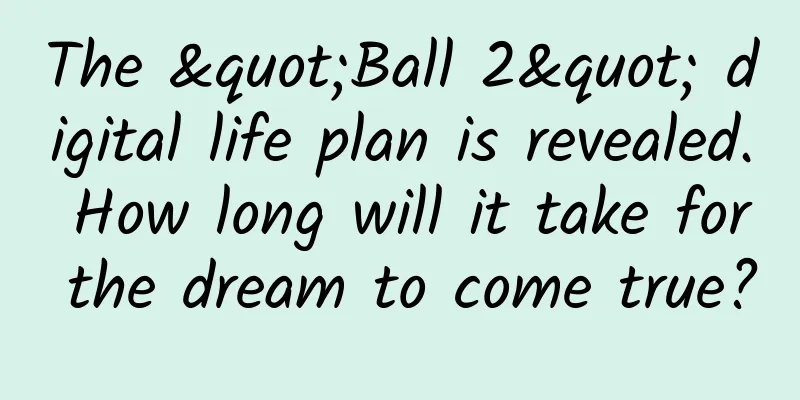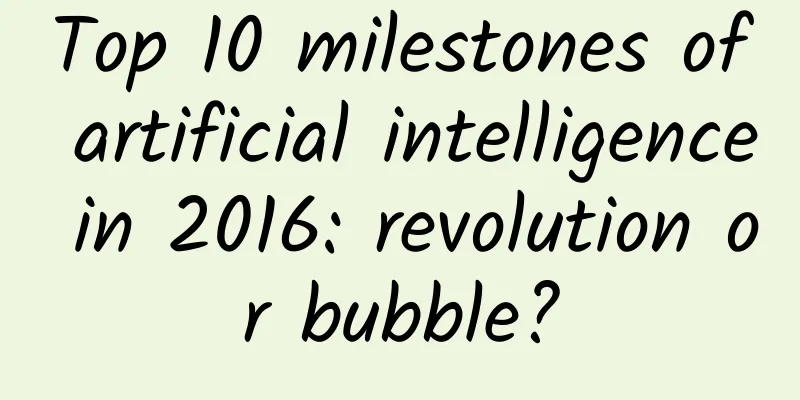The "Ball 2" digital life plan is revealed. How long will it take for the dream to come true?

|
After watching the movie, many people are very interested in the Digital Life Project. Since ancient times, life and death have always been the most difficult and tragic things in the world, and for this reason, countless people have longed for or even tried to achieve immortality. In ancient times, the Emperor of Qin sent Xu Fu to the fairy island to ask for medicine, and Emperor Wu of Han built a high platform to collect the dew. In modern times, people's yearning for immortality has also changed with the development of cloud computing and artificial intelligence. Science fiction works such as "Black Mirror", "Pantheon" and "Transcendence" have deeply thought about how to achieve immortality/or rebirth in the digital world. Next, I will talk about my design thoughts on brain-computer interfaces. Movie stills Since 1920, when German psychiatrist Dr. Hans Berger[1] successfully measured the human "electroencephalogram" using patch electrodes on the scalp, the scientific community has speculated that brain waves are a carrier of information that can be used by the brain to communicate directly with the outside world or the inside world. Since then, science fiction/game creations about brain wave control/brain wave suggestion have been heard everywhere. For example, in "Command and Conquer: Red Alert 2", there is a combat unit called "Yuri" who can control the minds of other units by manipulating brain waves. But at the time, no one wanted to turn these wild ideas into reality. This situation continued until 1970, when the scientific community gradually realized that certain observable parts of human brain waves can reflect the state of the brain [2]. For example, in hospitals, electroencephalograms assist doctors in diagnosing brain diseases by observing alpha waves. What's more, after the brain has a sense of movement, some brain waves will change accordingly. Scientists at the time believed that if they could capture these changing electrical signals, they might be able to restore the brain's "consciousness" when it was stimulated. Later, the third-generation brain wave polygraph was born: when stimulated by a low-probability event (such as making up a lie), a positive brain wave peak (i.e., P300 wave) can be observed around 300ms-1000ms, which can be used to determine whether the subject is lying. The famous science fiction concept of "consciousness uploading" is actually the reverse use of this phenomenon, that is, "Can the complete observation of EEG signals/human brain structure restore human consciousness itself?" We will not discuss this semi-scientific and semi-philosophical proposition for now, leaving you with a little suspense. But there is no doubt that since 1970, the scientific community has clearly known that there must be a connection between brain electrical signals and human consciousness, and has devoted a lot of practice to summarizing these connections. Since there is a known connection between inputting characters into a computer through a brain-computer interface, can we use some kind of brain waves to directly control external devices of the human body, such as prosthetic limbs or computers? This is the core scientific question of brain-computer interfaces. The original text comes from a groundbreaking paper published by Professor Jacques J. Vidal of the University of California, Los Angeles in 1973 [3]. Professor Vidal is a legend. He worked as an electrical engineer and an Air Force pilot. Later, he returned to college, put on a suit and took up teaching. Finally, he began to study the mammalian vestibular system at the UCLA Brain Science Institute. After becoming an independent researcher, he soon received a project funded by the U.S. Department of Defense to study brain-computer communication, which is also the source of this 1973 paper. In 1973, Professor Vidal first proposed the term "brain-computer interface" in the paper "Toward Direct Brain-Computer Communication". In this paper, he was very confident in his prediction: "Even based on the current state of computer science and neurophysiology at the time, it indicates that such a feat may be imminent." You know, computers were just emerging at that time, Atari was only a one-year-old newborn, and it was still seven years before the birth of "Pac-Man"; and just three years ago (1970), 26-year-old Ken Thompson had just started the UNIX era on a worn-out PDP-7. He would not realize that only 13 years later, he would win the Turing Award for this (Note: The UNIX era is the starting point of Apple's UNIX-like operating systems such as OS X and mainstream programming languages such as JAVA). Even though brain-computer interface did not make significant scientific progress for a long time afterwards, and was even considered a kind of "scientific fantasy" at the time, we have to admire Professor Vidal's insight and foresight in neuroscience and computational science: because today, 50 years later, "brain-computer interface" has become one of the technological trends that everyone in the science and technology field knows about, and it has even become a kind of "technological fashion." In fact, when we understood the core concept of "digital humans", we seriously thought about the specific presentation form of brain-computer interfaces. In early discussions, there were two options: "invasive brain-computer interface", which is to directly collect/stimulate electrical signals from the cerebral cortex through probes. The popular visual presentation is the insertion of a catheter behind the brain. In order to implant electrodes, it is generally necessary to open a real "brain hole"; the other is the "non-invasive brain-computer interface" that everyone sees now, which is to sample scalp electroencephalogram (EEG) through electrode patches, which is generally achieved by wearing an EEG cap or helmet. There is a more intuitive comparison in "Avatar". Humans use non-invasive brain-computer interfaces to enter Avatar, and Avatar connects to the soul tree, which can be compared to an invasive brain-computer interface. In reality, because the former can directly contact the cerebral cortex, it is usually more accurate, can transmit a larger amount of data, and has a higher possibility of being truly realized in the future. However, considering vision, ethics (inserting a tube behind the brain is a bit too evil) and the possible universality of the digital life plan (in modern times, it is unlikely that such an operation will gain so much support), the non-invasive solution was finally chosen. Otherwise, the guy lying down might have had a tube inserted in the back of his brain and would not be smiling so easily. In summary, if we want to realize digital humans, we can: Using relevant Internet data from one’s lifetime to complete “digital rebirth” or create a “digital avatar” is also the main way to realize “digital humans” in the real world. At present, the degree of simulation of such “digital humans” is far from that of real humans; Another possibility is to "digitize" the human mind and transfer it to a different "carrier" (such as a more advanced computer). If the carrier is durable enough and has sufficient energy, then technically humans can live forever in the digital world. The latter is obviously more suitable for the film's background. But before that, we must also think about the relationship between mind and body. This is an old question. Before Aristotle, ancient Greek philosophers began to think about the relationship between mind and body, namely the "mind-body problem", for more than two thousand years. The mind-body problem is mainly reflected in the confusion of Descartes' dualism: he believed that everyone is composed of two different entities, the body and the mind; the body and the mind are separable, exist independently, and can interact with each other, and the mind has no entity. In the mid-20th century, this concept has undergone some changes with the development of science. Some neuroscientists believe that consciousness is contained in the information processing of the brain. It is essentially an "emergence" phenomenon produced by large-scale neuronal clusters. Based on this conjecture, they compare the mind to a software program that runs on a hardware called the brain. Careful readers can see that this is the philosophical basis of the science fiction concept of "consciousness uploading", which is reflected in works such as "Pantheon" and is also the source of inspiration for the "Digital Life Plan" in the film. Modern science believes that Descartes' view is incomplete[4]. Although the mind undoubtedly originates from the brain, the brain often stores information and generates memories by reorganizing the connections between neurons (i.e., synapses), and behavioral consciousness is also likely to originate from the interaction between neurons and cortical areas in the brain[5]. To a certain extent, the process of the human brain forming new memories and new consciousness will lead to the generation, disconnection, or change in the strength of synapses, which is reflected externally as changes in brain waves. What impact will this adjustment of the three views on the "mind-body problem" have on science fiction settings? In previous science fiction works, such as the "uploaded intelligence" mentioned in "Pantheon", it is believed that by taking a molecular-level structural snapshot of the neural connections of the human brain, thoughts, consciousness, and emotions can be uploaded to the cloud. This is a typical "digital human realization framework" that conforms to Descartes' views. We think this is also incomplete. Based on the above analysis, we speculate that there is a connection between memory, behavior (or in a sense, mind) and changes in brain synapses, that is, "mind and body are actually partially correlated." A simple short-term snapshot of brain structure does not necessarily fully restore the mind. Human consciousness activities not only originate from the connection form of brain nerves, but are also reflected in the birth and death of neuronal connections, so it is necessary to record the laws of related neural activities in order to achieve consciousness restoration. *A framework for digital human realization based on improving Descartes' dualism (laughing, brain hole correction)* So far, our neurobiological and philosophical thinking on "digitalizing" a human has come to an end. If we take the real world as a starting point, we only need to make some important assumptions to answer the initial question of "how to make a digital human". These assumptions include: A completely accurate snapshot of the brain’s structure can store existing memories by recording neuronal connections; A perfect brain-computer interface can achieve long-term brain wave interaction with the subject's brain and record brain activity patterns corresponding to various conscious activities; Whole-brain simulation can successfully complete the mind-fitting and then reconstruct consciousness; The reconstructed consciousness is identical to the original consciousness both qualitatively and quantitatively. If the above assumptions are met, we can say that human consciousness can be uploaded or copied. The process of "human digitization" presented in the film gradually becomes clear before our eyes. In a more academic summary, the general framework of "digital humans" we propose should be: It is necessary for the subjects to wear non-invasive brain-computer interface devices for a long time to record the correlation between thinking and the birth and death of neuronal connections through changes in brain waves; By taking short-term snapshots of brain structure, the existing brain’s neuronal connection structure is recorded, thereby replicating memories; The data obtained from the above two points are used to complete the whole brain simulation; During this process, we continuously interact with the subject's brain waves to ensure that the whole-brain simulation and the original brain's judgment method are the same, which is "mind unchanged." The output of this entire process is a "digital human" with thinking and consciousness in the sci-fi sense, which is the function of the machine used by the Indian guy in the film (although it doesn't seem to appear in the film for a long time). References: 1.^Haas L F. Hans berger (1873–1941), richard caton (1842–1926), and electroencephalography[J]. Journal of Neurology, Neurosurgery & Psychiatry, 2003, 74(1): 9-9. 2.^Kamiya J. Conscious control of brain waves[J]. Psychology today, 1968, 1. 3.^Vidal J J. Toward direct brain-computer communication[J]. Annual review of Biophysics and Bioengineering, 1973, 2(1): 157-180. 4.^Marg E. DESCARTES'ERROR: emotion, reason, and the human brain[J]. Optometry and Vision Science, 1995, 72(11): 847-848. END Author: Cui Yuanhao, Science Consultant for The Wandering Earth 2 Assistant Director of the Science Popularization Committee of the China Computer Society |
<<: Can't drink coffee during recovery from COVID-19? Here comes the January scientific rumor list!
>>: Who “painted” those colors in the fireworks?
Recommend
x Improve various leg shape training methods basic version
x Improve various leg shape training methods Basic...
Lexus 2017 new plans for facelifted NX/IS/CT
Recently, we learned that Lexus will introduce a ...
15 key activity designs in the social network operations of 5 major brands
When it comes to community operations , many peop...
Jurassic World 3 is released, and the top Mosasaur is criticized for not appearing enough?
Breaking news: There’s a new movie in the “Jurass...
A liberal arts scholar who doesn't know calculus turns into a professional mathematician and creates his own toys to reveal natural wonders
I don't think my life is unconventional. Of c...
Will iPhone 6 push Samsung and HTC into the mid-range market?
Apple iPhone 6 was released as scheduled yesterda...
A showdown between the same brand! A 180,000 RMB pure electric sedan, the dark blue SL03 or the Qiyuan A07?
In 2022, Changan Automobile launched its first in...
Google open-sources a “poor man’s version” summary generation NLP model: 1,000 samples can beat humans
This article is reprinted with permission from AI...
More exciting than Chinajoy? An in-depth analysis of the Nibiru air combat chair
The annual Chinajoy exhibition officially ended i...
Quantitative Science Lecture Hall - Jiang Linghai's compulsory course on returning to zero and starting a journey, call auction + time-sharing market
Quantitative Science Lecture Hall - Jiang Linghai...
Is the effect of bidding advertising promotion terrible? Pay attention to these 4 points
I often hear advertisers complain that SEM promot...
2022 NetEase video brick moving to make money, daily income 120 (video tutorial + document)
2022 NetEase video brick moving to make money, da...
How to use coupons and cases
Coupons are a form of "expression" in m...
The first new energy family car in the Year of the Snake, Trumpchi E8 PRO+ is priced at 209,800 yuan for a limited time.
Chang'an is in a prosperous era and happiness...
China Automobile Dealers Association: The automobile dealer inventory coefficient was 1.76 in October 2022
On November 10, 2022, the China Automobile Dealer...









